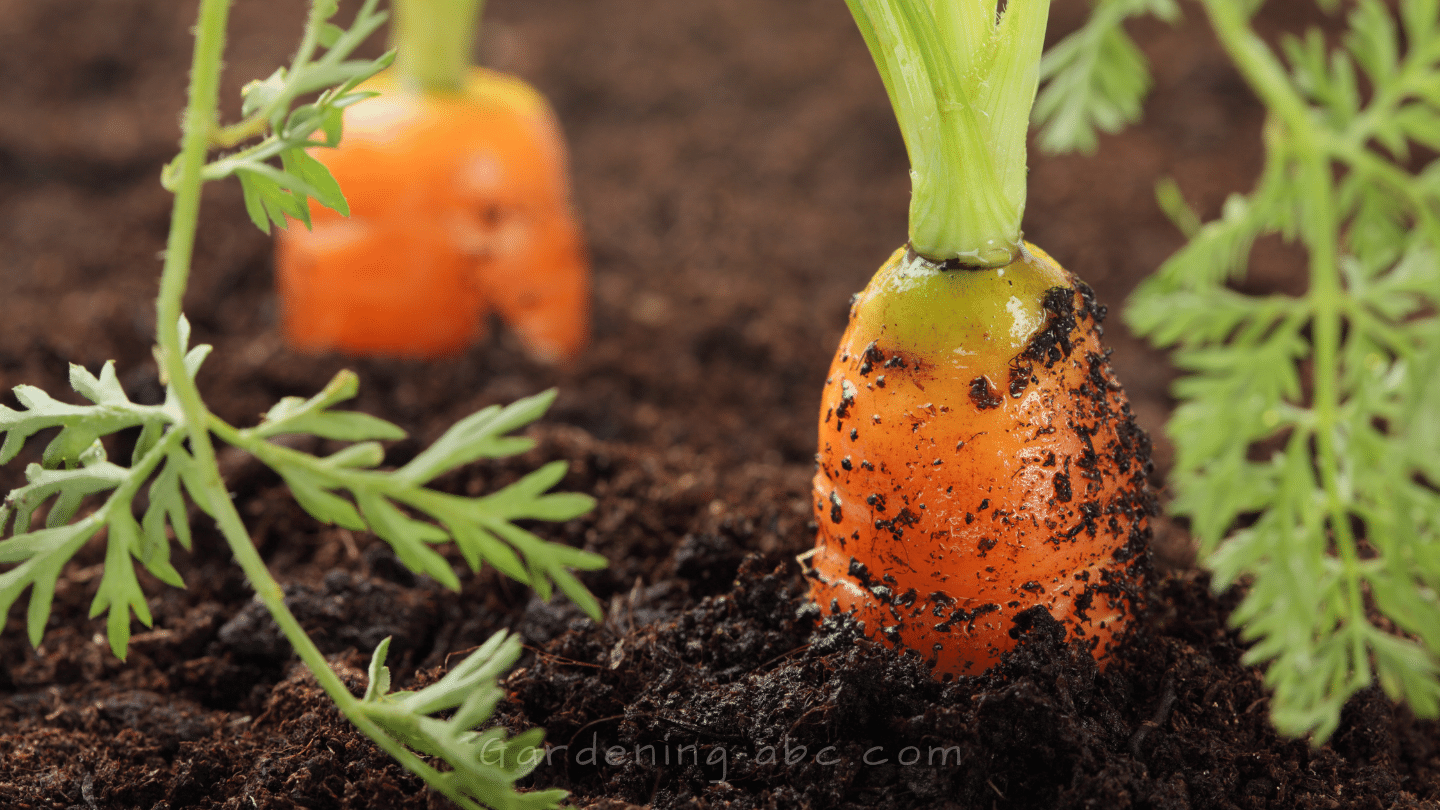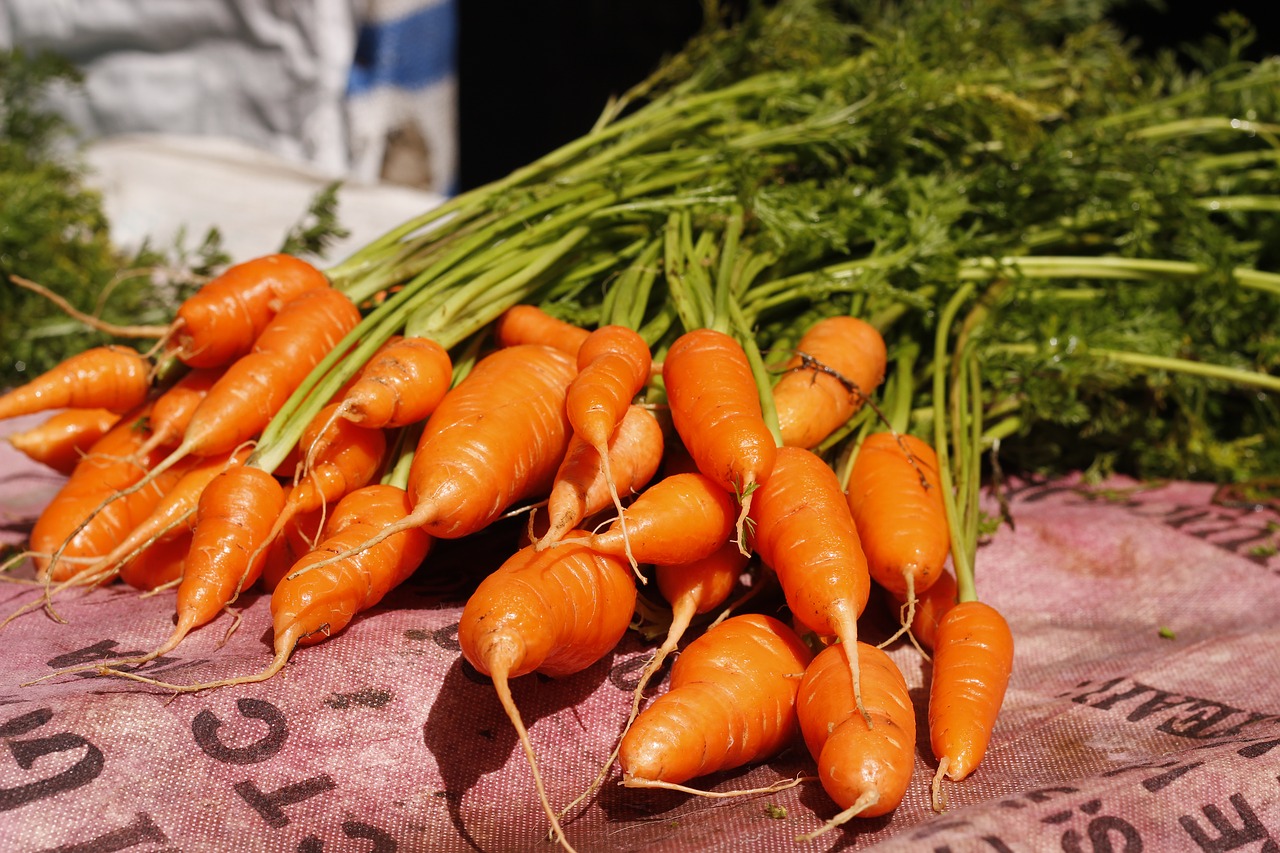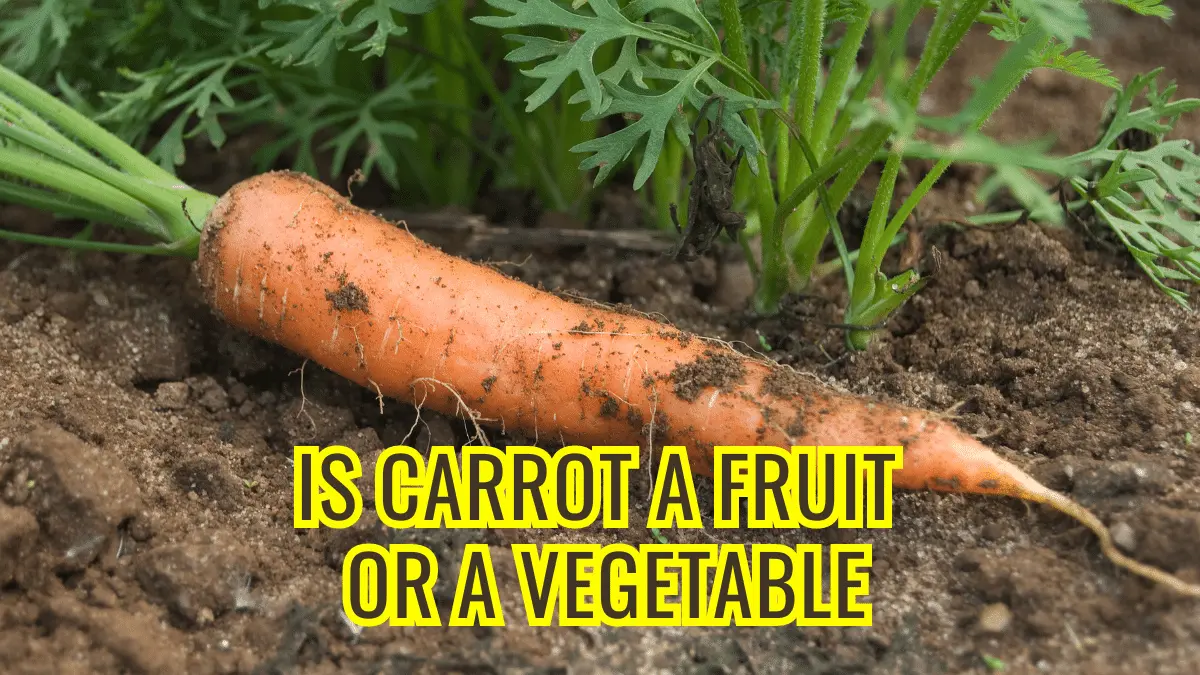We use affiliate links to run our site. When you buy through links on our site, we may earn an affiliate commission, without any added cost to you. Learn more
Carrots are a type of root vegetable and can be categorized as such by the USDA. However, some people consider carrots to be fruits because they are eaten raw and contain seeds.
If you are new to this it might even seem very confusing.
So here in this post, we will give you clear answers to the question so you won’t have any confusion.
First, let’s understand…
Difference Between a Fruit and a Vegetable:
Usually, in the culinary sense, we use taste to distinguish between a fruit and a vegetable. So things that are generally sweet and you can eat without cooking in termed fruits and whatever doesn’t fall into that category is called a vegetable.
But botanically the naming system is much more clearly defined.
In Botany, a fruit is the edible part of a plant that contains the seed, while a vegetable is the edible part of a plant that does not contain the seed. A vegetable can be roots, leaves, or stems.
A carrot doesn’t contain seeds so it can not be technically called a fruit it is called a root vegetable.
Is Carrot A Fruit or Vegetable?
Carrots are root vegetables, not fruits. While they may have some sweet flavor and vibrant color, they are botanically classified as root vegetables. The distinction between fruits and vegetables is based on botanical definitions, and for carrots, they are 100% vegetables.
But Carrots Have Seeds. Don’t They?
Although the carrot plants produce seeds that are not inside the edible part we called “the carrot”. The seeds are grown inside the carrot flowers.
As a carrot plant is mainly grown for the roots the plant rarely gets the time to grow seeds. A carrot is a biennial plant so it generally needs 2 years to complete the whole life cycle.
Which Parts of Carrots We Eat?
The part of the carrot we eat is the taproot, which is the large central root that grows down into the ground. The taproot is considered a root vegetable, along with other edible plant roots like beets, sweet potatoes, and turnips.
As a root vegetable, the carrot taproot stores energy and nutrients to help the plant grow. Originally, wild carrots had very thin, woody taproots with a bitter taste. But through selective breeding over many years, farmers transformed carrots to have larger, straighter, sweeter taproots for us to eat.
Other parts of the carrot plant like the stems, leaves, flowers, and seeds are not typically eaten. The taproot is the primary part that was cultivated and domesticated to become the nutritious orange root vegetable we enjoy today.
Though we occasionally eat the leafy green carrot tops, it’s those juicy, crunchy taproots that are the carrot’s most valuable edible portion.
A Brief History of Carrot Cultivation:
Carrots have been around for ages, but they didn’t always look or taste like the crunchy, orange roots we munch on today. Believe it or not, the first carrots were grown for their flowery greens and seeds, not those taproots down below.
These ancient carrot plants likely got their start thousands of years ago in modern-day Afghanistan. Though you might not guess it, they sported tiny purple or yellow roots, not the orange we know and love.
Over time, around the 10th century, carrot roots got a glow up. Farmers started breeding them to be less woody and bitter, focusing on developing tastier taproots. Early on, these roots were still pretty skinny and pale in color – think white or light yellow.
After that, carrots got popular around Europe and North Africa. Folks figured out that deeper-colored orange and red carrots were sweeter, so bright beta-carotene-rich varieties became prized.
By the 16th century, Dutch carrot breeders had mastered growing vivid orange beauties with a nice snap and sweetness. Europeans brought these heirloom carrots to North America and beyond.
Nowadays we’ve bred up all kinds of shapes, sizes, and colors, but those lovely orange roots the Dutch selected still reign supreme in most kitchens.
Wild Carrot Fruits:
While the taproot we eat of domesticated carrots is vegetative, wild carrots produce true botanical fruits containing seeds, originating from the flower.
After wild carrot plants flower, they form umbrella-shaped seed structures called umbels. Each umbel contains numerous tiny fruits that each enclose a carrot seed. These dry, compound fruits are made up of two fused carpels, which is the technical term for a plant’s ovary or seed-producing base of the flower.
The wild carrots fruits contain unique monoterpenes, sesquiterpenes, and other aromatic compounds. These give wild carrot fruits a distinct flavor and aroma from the cultivated carrot varieties we eat.
Can I Harvest After Flowering:
If you are planning to eat your carrots then you should harvest them early. Waiting for the plant to finish its life cycle can result in woody tasteless carrots.
On the other hand, if you are planning to harvest carrot seeds you have to wait for them to finish their life span.
Growth Stages of A Carrot:

All plants go through different stages of growth, and biennial plants are no different. Carrots, for example, have two main stages: the first is when they grow leaves and the root system; the second is when they flower and produce seeds.
The first stage of a carrot’s growth takes place during the first year of its life. In this stage, the plant will grow leaves and a root system. The leaves help the plant to get energy from the sun, while the root system helps it to absorb water and nutrients from the soil.
The second stage of a carrot’s growth takes place during its second year of life. In this stage, the plant will flower and produce seeds. Once it flowers, the plant will die – but not before it has produced new carrots that will go through the same two-stage growth process.
Carrot Growth 1st Year:
When you first plant the carrot seeds after some time it germinates. One part of the plant goes upward above the soil and produces leaves while the other part goes deep inside the soil and forms the taproot.
The leaves start to make food for the plant and the taproot along with collecting water and nutrients starts to swell up. This will eventually result in carrot formation which usually takes 70-80 days.
At this time the carrot tops continue to grow and form more leaves. This is the time when you will get the best-tasting carrots and most of the time here the plant life ends(due to harvesting).
Carrot Growths in 2nd Year:
If you leave the plant unharvested, the carrot top will die due to frost and the plant will go on dormancy.
Once the winter is over, you will see new leaves and stems start emerging from the plant and this will produce carrot flowers(small white blossoms).
These flowers will produce carrot seeds and once the flowers dry you can easily collect the carrot seeds by shaking the flowers.
A single carrot plant can produce up to 10,000 seeds!
How to Choose Good Carrots:
The first step in choosing good carrots is to look for a firm, healthy stalk. Look at the color you want to choose carrots that are orange or yellow, as these carrots have the most beta-carotene. Check for any bruises or blemishes on the skin of the carrot.
Avoid wilted carrots or cracked ones.
How to Cook Carrot Roots:
The sweet, hearty flavor of carrot roots makes them extremely versatile in savory cooking applications across cultures. Shredded or chopped carrots are commonly added to soups, stews, casseroles, and mixed vegetable medleys as they pair well with seasonings like garlic, dill, parsley, and cumin.
The natural sugars in carrots balance well with meats and other vegetables. Raw carrot sticks make ideal vehicles for hummus and nutrient-dense snacks. Carrots can be roasted or sautéed as a side dish or salad topper.
Their sweetness can be concentrated in desserts as well, including carrot cakes, muffins, and even shakes. While carrots are technically fruits, their savory flavor profile aligns with culinary traditions across the globe that treat the beloved orange root as a versatile vegetable.
Nutrition Value of a Carrot:

When you look at the nutrition stats on carrots, it’s kinda crazy how good these crunchy orange sticks really are for you. Just one medium-sized raw carrot has only about 25 calories—that’s it. But it comes packed with boatloads of important vitamins and minerals.
Carrots are basically a vitamin A bomb, with one carrot giving you over 200% of the amount you need each day. That’s way more than other veggies like spinach and tomatoes. Only sweet potatoes can really match carrots when it comes to vitamin A bragging rights.
Carrots’ vitamin A comes in the form of an antioxidant called beta carotene, which gives carrots their bright orange color. When we eat carrots, our bodies convert the beta carotene into vitamin A, allowing us to absorb this important nutrient.
On top of that, carrots give you antioxidants, vitamin K, potassium, and fiber. And we’re talking a decent amount of fiber here, which helps fill you up. Another carrot bonus? They’ve got a low sugar content, unlike most fruits which can spike your blood sugar.
With all that nutrient density combined with very few calories and sugars, carrots really are in a nutrition league of their own. No wonder Bugs Bunny is always munching on these guys! When you’ve got the munchies, carrots are one of the healthiest snacks around.
Conclusion:
In conclusion, a carrot is a root vegetable and not a fruit. The seeds are produced inside the flowers and not inside the carrots. Although there is some confusion over the issue, this is the consensus among experts.
Like the information? Here are 11 more common questions about carrots don’t forget to check that out.
Don’t forget to share the information with others also.
Amazon and the Amazon logo are trademarks of Amazon.com, Inc, or its affiliates.

Hi there! My name is Prasenjit and I’m an avid gardener and someone who has grown a passion for growing plants. From my hands-on experience, I have learned what works and what doesn’t. Here I share everything I have learned.
